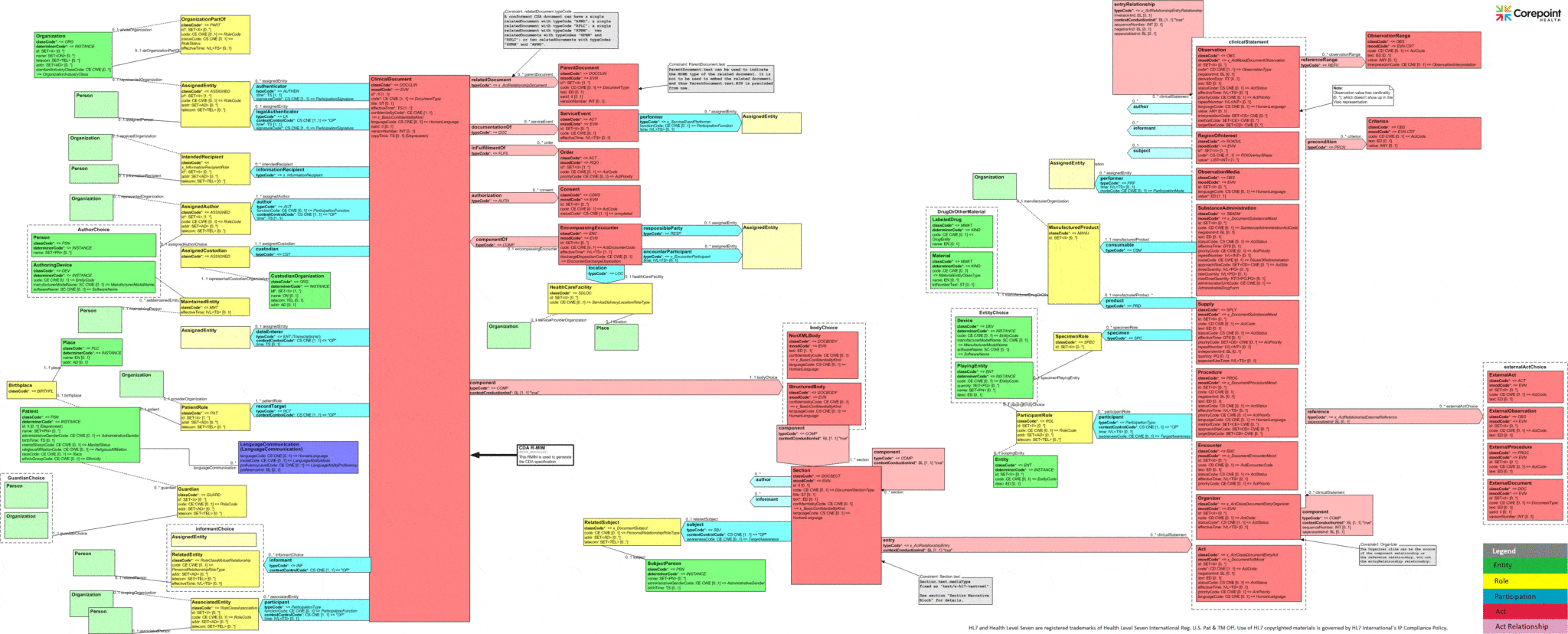Refined Message Information Models (R-MIMs) are used to model specific case scenarios within the HL7 V3 standard. Each R-MIM is a subset of the D-MIM, and a D-MIM is a subset of the RIM. The R-MIM contains only those classes, attributes, and associations required to compose the specific set of messages or documents.
The HL7 V3 rules require that all information structures in derived models be traceable back to the RIM. Their semantic and related business rules should not conflict with those specified in the RIM. The RIM therefore is the ultimate source for all information content in HL7 V3 standards. D-MIMs and R-MIMs are simply constraints on the RIM.
The CDA R-MIM is the most popular of the R-MIM models, designed specifically for the exchange of clinical documents. Below is an image of the CDA R-MIM model.

Related topics:
